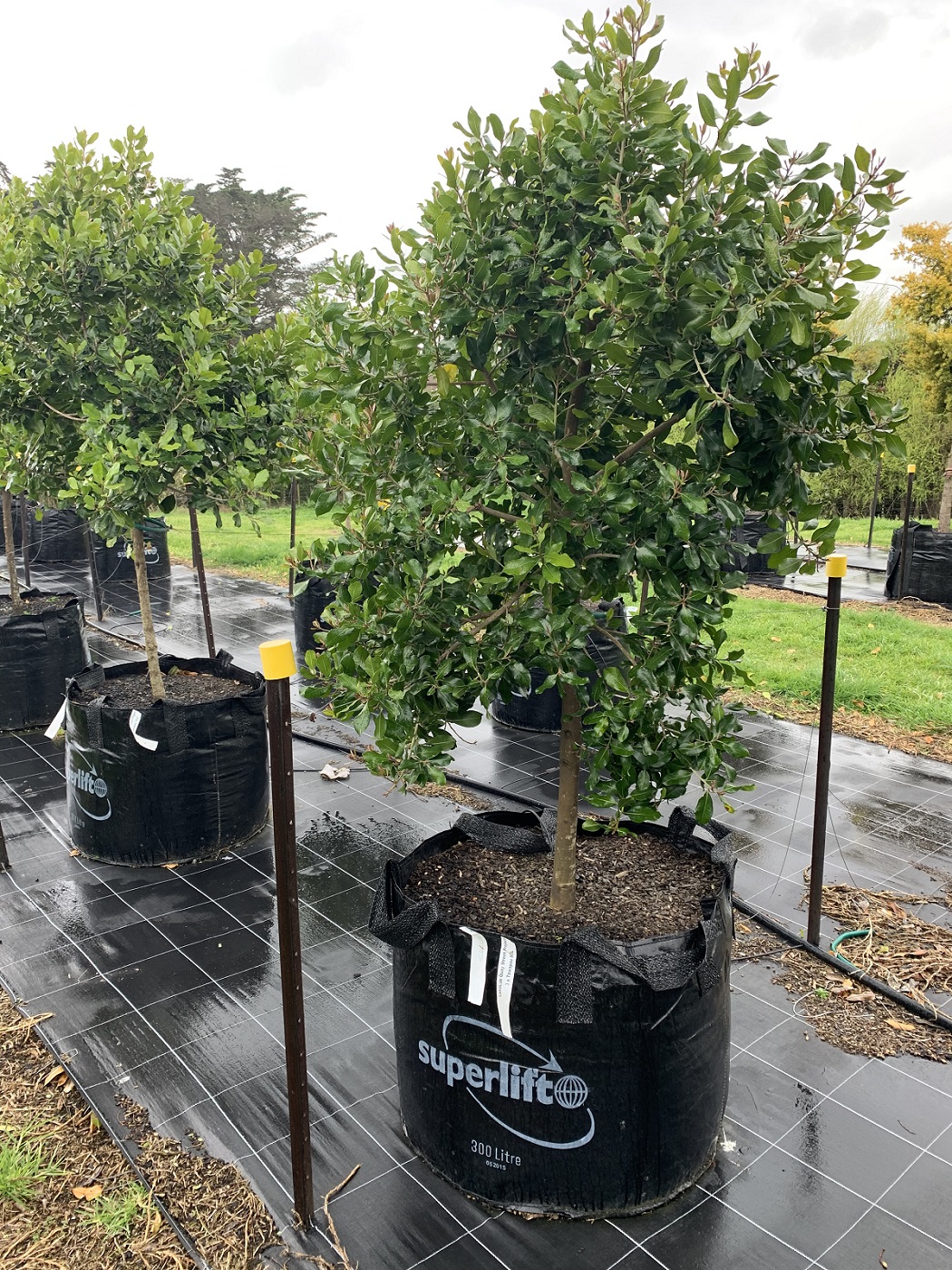Imagine walking out of a downtown office block or a Commercial Bay restaurant and hearing tūī singing or seeing kererū feasting on karaka berries.
This may seem a far-off dream but could soon be a reality thanks to innovative thinking around tree plantings and the role ngahere (forests) can play in the city centre.
Auckland Council’s Ngahere Senior Advisor Howell Davies says part of that thinking is to plant more mature trees around the city and considering what the right tree is for the space.
“Larger trees have a greater impact from day one. They give a more finished look, create a more welcoming space for the public. They also play a role in reducing the urban heat effect and capture carbon from traffic.”
Sourcing those larger trees has been key and Howell says working with local nurseries adds to the success of the ngahere strategy.
“One nursery in Puhinui grows trees for council under contract and they have a large range of healthy tree stock that have been grown for years. The other benefit from my perspective is location. The nursery is in an exposed area with winds coming straight from the Manukau Heads, so the trees are stronger and hardier. That means when the trees are planted in the city centre, they are more adaptable and capable of coping with being in windy conditions.”

Tawāpou ready to be planted in a city centre public garden.
Councillor Richard Hills, Chair of Auckland Council’s Environment and Climate Change Committee, who visited the nursery with his committee deputy Councillor Pippa Coom and Howell, agrees and believes the approach will show advantages for years.
“It is amazing to see the trees for Quay Street, Federal Street, and public spaces around the region, growing to suit their new environments. We all benefit from urban plantings and this innovative approach ensures our ngahere are strong and established before transplanting to give them the best chance of survival.”
The ngahere strategy is focused on increasing the greening of Tāmaki Makaurau. For Howell, larger trees have an instant effect on that increase.
“A tree is considered part of the urban ngahere once it reaches a height of 3 metres, so from that perspective the trees add to the central city’s overall canopy cover at a faster rate.”
Sustainability is another important consideration and Auckland Council has been at the forefront of tree management for years.
“Having gardens that fit in the area is the goal. For example, gardens with coastal trees and plants along Quay Street recreates what used to be there.
“Transplanting mature trees as often as we can is also important. The effort in relocating trees, even temporarily, is worth it in the long run as we create beautiful spaces that people want to spend time in.

Lighthouse Pōhutukawa ready for planting in an inner city public garden.
“We have also devised special pits to home the transplanted trees. This reduces the amount of damage the root systems of trees might do to footpaths and keeps maintenance and repair costs down.”
Councillor Hills believes innovations like this create a better way forward for developments across Tāmaki Makaurau.
“I am really proud of the care, quality of work, and innovation from our Auckland Council staff and how it is driving a new best practise for Auckland.
“We are planting hundreds of new mature trees in public spaces and millions of seedlings in reserves are doing a massive job to increase our urban ngahere, capture our emissions, help reduce stormwater runoff, encourage biodiversity and new birdlife in areas where we haven’t seen them in decades and on top of that they provide great shade and amenity for our residents.”


